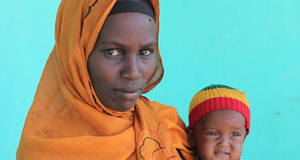Featured Article:The Influence of Religion on Health
By
2011, Vol. 3 No. 01 | pg. 3/3 | « Finally, a line of studies that can be seen as encompassing the research presented above, too, is the one that related religious practices to protection against death. Two of the studies already presented (Hummers et al., 1999; Oman et al., 2002) have looked at associations between frequent attendance of religious services and major types of cause-specific mortality: circulatory, respiratory, digestive, cancer and external causes (Oman et al., 2002), or circulatory, respiratory, infectious, cancer, diabetes, external and residual (Hummer et al., 1999). Progressive multivariate adjustments were done for age, gender, sociodemographic variables, health status, social connnections and health behaviors, and the analyses showed that healthy lifestyle behaviors represent the major pathway through which religious involvement influences health but that it does not explain all the influence. Thus, religious involvement may offer protection against death from various diseases beyond the one offered through healthy behaviors (Oman et al., 2002) and social associations (Hummer et al., 1999). Musik, House and Williams (2004) analyzed the data from a large sample of adults followed for 28 years in order to investigate the effect of religious services attendance on mortality. In order to do this, they regressed the date of death on the predictor variables in a Cox proportional hazard model. Variables such as age, gender, race, service attendance, sociodemographics and SES, health status, health behaviors, social integration and support, other religious factors (e.g., volunteering for church, subjective religiosity/comfort, private religious activities) and beliefs (e.g., negative justice, fatalism) were entered in the model and the results showed that service attendance has a significant and sizable protective effect on mortality, such that mortality is reduced by 30-35 percent, and that healthy behaviors (particularly moderate physical activity) seem to mediate approximately 30 percent of that protective effect and social integration and support marginally mediating the protective effect (Musik et al., 2004). Lastly, two studies provided additional proof for the protecting effect of religiosity from mortality. One is a meta-analysis of 42 studies that found that religious involvement was significantly associated with lower mortality, although some of this associated can be accounted for by mediating factors such as demographics, psychosocial and health-related variables, (McCullough, Hoyt, Larson, Koenig & Thorensen, 2000). Another finding was that the relationship was stronger for women than for men. The other study revealed this association only for women, such that women with lowest religiousness through adulthood lives less than women who were more religious, but this association was found to be attributable to variables like personality traits, social ties, health behaviors and mental and physical health (McCullough, Friedman, Enders & Martin, 2009). Another set of studies looked at the relationship between religion and mortality in elderly adults. One of these used a sample of community-dwelling elderly (Oman & Reed, 1998). Again, progressive multivariate adjustments were done for age, gender, demographics, health status, physical functioning, health habits, social functioning and support, and psychological state., religious attendance did protect against mortality and the level of protectiveness grew when social support was involved, as well, showing a complementary trend between the two variables. Similar results on a sample of elderly showed that religious services attendance protected against disability for both men and women and private religious involvement protected against depression for recently disabled men (Idler & Kasl, 1992). A very interesting result was that religious group membership protected both Christians and Jews against mortality in the month before their respective major holidays. The authors considered health behaviors, social support and optimism among the major factors that can explain part of these associations, along with religious services attendance and the finding of a meaning in life (Idler & Kasl, 1992). However, studies that looked at the relationship between religion and mortality in elderly patients did not yield as optimistic results as the ones yielded by the studies on adults and elderly adults (Kutner, Lin, Fielding, Brogan & Hall, 1992; Pargament, Koenig, Tarakeshwar & Hahn, 2001). One study investigated whether social and/or psychologic factors help to predict older dialysis patients' continued survival. A stratified (by race and sex) random sample of elderly patients, receiving chronic dialysis, was interviewed about demographic, dialysis, health status, social situation, and psychological outlook variables. When a Cox proportional hazard model was fit to the data, with continued survival from the time of the interview as the dependent variable, no other psychosocial variable was a significant predictor of mortality, except the functional status (Kutner et al., 1992). The other study followed a sample of elderly patients for two years in order to assess the influence of religious coping and struggle on mortality (Pargament et al., 2001). With demographic, physical and mental health variable controlled, the analyses showed that religious struggle (e.g. high ratings of spiritual discontent, such as feelings that God has abandoned the person or does not love the person) actually increases mortality.Conclusion and Areas for Future StudyThe literature reviewed above is not only extensive but goes in great depth into the relationships between spirituality, religion, and health. Associations between spirituality and Eastern religious practices and lower blood pressure, lower levels of stress hormones and lower oxidative stress have been found (Seeman et al., 2003). Moreover, associations between Judeo, Christian, and Islamic religious practices and lower blood pressure, protective effect against cardiovascular disease, increased immune function, lipid levels and protective effect against all-cause mortality were found (Seeman et al., 2003; Powell, 2003). Nonetheless, little research has been done on certain populations and on certain associations between religion and health (e.g. lipids, immunity, other physiological measures, different types of causes for mortality). Moreover, little research has expanded the notion of religiousness or religious commitment. Many of the studies presented above measure religiousness as attendance to religious services (in all three major religions) (Colantonio et al., 1992; Koenig et al., 1997; Oman & Reed, 1998; Hummer et al., 1999; Sephton et al., 2001; Oman et al., 2002; Musik et al., 2004), and sometimes included also private practices such as prayer and reading religious literature (Idler & Kasl, 1992; Hixon et al., 1998; Koenig et al., 1998; Woods et al., 1999; McCullough et al., 2000; Steffen et al., 2001; Al-Kandari, 2003; McCullough et al., 2009). Only a few studies looked at fasting and other religious diet consideratons or included this among their measures of religiousness (Friedlander et al., 1985; Friedlander et al., 1987; Asgary, 2000; Al-Kandari, 2003; Sarri, 2003). Finally, only very few studies took into consideration the multiple dimensions of religion (Al-Kandari, 2003; Musik et al. 2004). ReferencesAl-Kandari, Y.Y. (2003). Religiosity and its relation to blood pressure among selected Kuwaitis. Journal of Biosocial Science, 35, 463-472. Asgary, S., Aghaei, F., Naderi, G.A., Kelishadi, R., Gharipour, M. & Azali, S. (2000). Effects of Ramadan fasting on lipid peroxidation, serum lipoproteins, and fasting blood sugar. Medical Journal of Islamic Academy of Sciences, 13, 35-38. Colantonio, A., Kasl, S.V. & Ostfeld, A.M. (1992). Depressive symptoms and other psychosocial factors as predictors of stroke in the elderly. American Journal of Epidemiology, 136, 884-894. Hixon, K.A., Gruchow, H.W. & Morgan, D.W. (1998). The relation between religiosity, selected health behaviors, and blood pressure among adult females. Preventive Medicine, 27, 545-552. Hummer, R.A., Rogers, R.G., Nam, C.B. & Ellison, C.G. (1999). Religious involvement and U.S. adult mortality. Demography, 36, 273-285. Idler, E.L. & Kasl, S.V. (1992). Religion, disability, depression and the timing of death. The American Journal of Sociology, 97, 1052-1079. Infante, J.R., Peran, F., Martinez, M., Roldan, A., Poyatos, R. Ruiz, C., Garrido, S. & Garrido, F. (1998). ACTH and β-endorphin in transcendental meditation. Physiology and Behavior, 64, 311-315. Ironson, G., Solomon, G.F., Balbin, E.G., O'Cleirigh, C., George, A., Kumar, M., Larson, D. & Woods, T.E. (2002). The Ironson-Woods spirituality/religiousness index is associated with long survival, health behaviors, less distress, and low cortisol in people with HIV/AIDS. Annals of Behavioral Medicine, 24, 34-48. Jevning, R., Wilson, A.F. & Davidson, J.M. (1978). Adrenocortical activity during meditation. Hormones and Behavior, 10, 54-60. Koenig, H.G., Cohen, H.J., George, L.K., Hays, J.C., Larson, D.B. & Blazer, D.G. (1997). Attendance at religious services, interleukin-6, and other biological parameters of immune function in older adults. International Journal of Psychiatry in Medicine, 27, 233-250. Koenig, H.G., George, L.K., Hays, J.C., Larson, D.B., Cohen, H.J. & Blazer, D.G. (1998). The relationship between religious activities and blood pressure in older adults. International Journal of Psychiatry in Medicine, 28, 189-213. Kutner, N.G., Lin, L.S., Fielding, B., Brogan, D. & Hall, W.D. (1992). Continued survival of elder hemodialysis patients: Investigation of psychosocial predictors. American Journal of Kidney Diseases, 24, 42-49. McCullough, M.E., Hoyt, W.T., Larson, D.B., Koenig, H.G. & Thorensen, C.E. (2000). Religious involvement and mortality: A meta-analytic review. Health Psychology, 19, 211-222. McCullough, M.E., Friedman, H.S., Enders, C.K. & Martin, L.R. (2009). Does devoutness delay death? Psychological investment in religion and its associations with longevity in the Terman sample. Journal of Personality and Social Psychology, 97, 866-882. Miller, W.R. & Thorensen, C.E. (2003). Spirituality, religion, and health: An emerging research field. American Psychologist, 58, 24-35. Musik, M.A., House, J.S. &Williams, D.R. (2004). Attendance at religious services and mortality in a national sample. Journal of Health and Social Behavior, 45,198-213. Oman, D., Kurata, J.H., Strawbridge, W.J. & Cohen, R.D (2002). Religious attendance and cause of death over 31 years. International Journal of Psychiatry in Medicine, 32, 69-89. Oman, D. & Reed, D. (1998). Religion and mortality among the community-dwelling elderly. American Journal of Public Health, 88, 1469-1475. Oman, D. & Thorensen, C.E. (2002). ‘Does religion cause health?: Differing interpretation and diverse meanings. Journal of Health Psychology, 7, 365-380. Oman, D. & Thorensen, C.E. (2003). Without spirituality does critical health psychology risk fostering cultural iatrogenesis?. Journal of Health Psychology ,8, 223-229. Pargament, I., Koenig, H.G., Tarakeshwar, N. & Hahn, J. (2001). Religious struggle as a predictor of mortality among medically ill elderly patients: A 2-year longitudinal study. Archives of Internal Medicine, 161, 1881-1885. Patel, C., Marmot, M.G., Terry, D.J., Carruthers, M., Hunt, B. & Patel, M. (1985). Trial of relaxation reducing coronary risk: Four year follow up. British Medical Journal, 290, 1103-1106. Pesut, B., Fowler, M., Taylor, E.J., Reimer-Kirkham, S. & Sawatzky, R. (2008). Conceptualising spirituality and religion for healthcare. Journal of Clinical Nursing, 17, 2803-2810. Powell, L.H., Shahabi, L. & Thorensen, C.E. (2003). Religion and spirituality: Linkages to physical health. American psychologist, 58, 36-52. Sarri, K.O., Tzanakis, N.E., Linardakis, M.K., Mamalakis, G. D. & Kafatos, A.D. (2003). Effects of Greek Orthodox Christian Church fasting on serum lipids and obesity. BMC Public Health, 3. Scheider, R.H., Staggers, F., Alexander, C.N., Sheppard, W., Rainforth, M., Kondwani, K., et al. (1995). A randomized controlled trial of stress reduction for hypertension in older African Americans. Hypertension, 26, 820-827. Schneider, R.H., Nidich, S.I., Salerno, J.W., Sharma, H.M., Robinson, C.E., Nidich, R.J. & Alexander, C.N. (1998). Lower lipid peroxide levels in practitioners of the transcendental meditation program. Psychosomatic Medicine, 60, 38-41. Schmidt, T., Wijga, A., Von Zur Muhlen, A., Brabant, G. & Wagner, T.O.F. (1997). Changes in cardiovascular risk factors and hormones during a comprehensive residential three month Kriya yoga training and vegetarian nutrition. Acta Psychologica Scandinavica: Supplementum, 160, 158-162. Seeman, T. E., Fagan-Dubin, L. & Seeman, M. (2003). Religiosity/Spirituality and health: A critical review of the evidence for biological pathways. American Psychologist, 58, 53-63. Sephton, S.E., Koopman, C., Schaal, M., Thorensen, C.E. & Spiegel, D. (2001). Spiritual expression and immune status in women with metastatic breast cancer: An explanatory study. The Breast Cancer Journal, 7, 345-353. Steffen, P.R., Hinderliter, A.L., Blumenthal, J.A. & Sherwood, A. (2001). Religious coping, ethnicity, and ambulatory blood pressure. Psychosomatic Medicine, 63, 523-530. Sudsuang, R., Chentanez, V. & Vevulan, K. (1991). Effect of Buddhist meditation on serum cortisol and total protein levels, blood pressure, pulse rate, lung volume, and reaction time. Physiology and Behavior, 50, 543-548. Walton, K.G., Pugh, N.D., Gerderloos, P. & Macrae, P. (1995). Stress reduction and preventing hypertension: Preliminary support for a psychoneuroendocrine mechanism. Journal of Alternative and Complementary Medicine, 1, 263-283. Woods, T.E., Antoni, M.H., Ironson, G.H. & Kling, D.W. (1999). Religiosity is associated with affective and immune status in symnptomatic HIV-infected gay men. Journal of Psychosomatic Research, 46, 165-176. Suggested Reading from Inquiries Journal
Inquiries Journal provides undergraduate and graduate students around the world a platform for the wide dissemination of academic work over a range of core disciplines. Representing the work of students from hundreds of institutions around the globe, Inquiries Journal's large database of academic articles is completely free. Learn more | Blog | Submit Latest in Psychology |


















